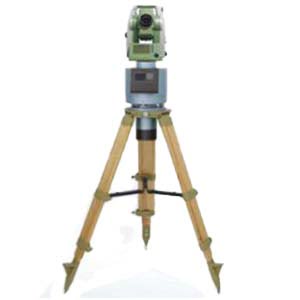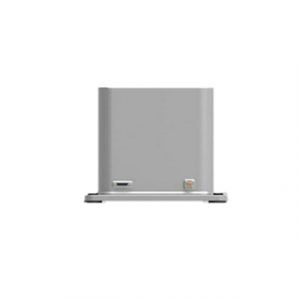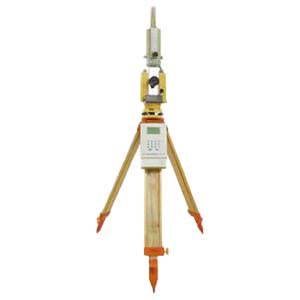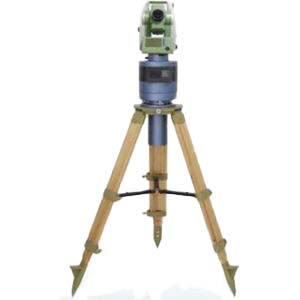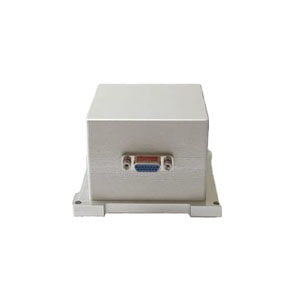I. Composition of theodolite
Theodolite is the main angle measuring instrument in surveying work. It consists of a gyroscope, a telescope, a horizontal dial, a vertical dial, a level, and a base.
When measuring, place the theodolite on a tripod, align the center of the instrument on the ground station with a vertical ball or an optical alignment device, use a level to level the instrument, use a telescope to aim at the measurement target, and use a horizontal dial and a vertical dial. Determine the horizontal and vertical angles. According to the accuracy, it can be divided into precision theodolite and ordinary theodolite; according to the reading equipment, it can be divided into optical theodolite and vernier theodolite;
In addition, there are coded dial theodolites that can automatically record dial readings according to coded perforations; automatic tracking theodolites that can continuously and automatically aim at air targets; gyro theodolites and laser theodolites that quickly and independently determine the orientation of ground points by using the principle of gyro orientation; It is an all-around theodolite for astronomical observation with three functions of instrument and zenith instrument; a photographic theodolite for ground photogrammetry that combines a camera with a theodolite.
DJ6 theodolite is an optical theodolite widely used in topographic survey, engineering and mine survey. It is mainly composed of three parts: the level dial, the sighting part and the base.
1.The base part
It is used to support the base sighting part, and there are three foot screws on it, its function is to level the instrument
2.Sighting Department
The sighting part is the main part of the theodolite. The components of the sighting part include a level tube, an optical point device, a bracket, a horizontal axis, a vertical dial, a telescope, and a dial reading system.
3.The dial part
The DJ6 optical theodolite dial has a horizontal dial and a vertical dial, both of which are made of optical glass. The horizontal dial is drawn clockwise from 0° to 360° along the full circle, and the minimum grid value is generally 1° or 30′.
II. the theodolite placement method
1) Adjust the tripod to the same length and suit the height of the operator. Fix the instrument on the tripod so that the base surface of the instrument is parallel to the top surface of the tripod.
2) Place the instrument dance on the measuring station. After the visual estimation is roughly centered, step on one foot of the stand, adjust the eyepiece of the optical plummet (see the crosshairs clearly) and the objective lens (see the measuring station clearly). Lift a frame foot and swing it back and forth, left and right, look at the centering device so that the intersection of the crosshairs and the measuring point coincide, place it steadily and step on the solid frame foot.
3) Telescopic tripod leg length leveling circular level
4) Place the leveling tube in parallel with the two leveling screws to level the leveling tube.
5) Turn the sighting part by 90 degrees, and use the third spiral to level the leveling tube.
6) Check the optical alignment. If there is a small amount of deviation, open the connecting screw translation base to make it accurately centered, tighten the connecting screw, and then check the centering of the level bubble.
III. Dial reading method
The reading system of the optical theodolite includes several parts such as horizontal and vertical dials, micrometer devices, and reading microscopes. The minimum grid value of the scales on the horizontal dial and vertical dial is generally 1° or 30′. When reading the angle value less than one grid value, the micrometer device must be used to measure the reading of the DJ6-level optical theodolite. There are two types of micrometer devices: micrometer and parallel glass micrometer.
(1) Micrometer reading device
At present, the new DJ6-level optical theodolites all use this device.
A reticle with a reticle is set in the field of view of the reading microscope, the reticle on the dial is imaged on the reticle after being enlarged by the microscope, and the imaging width of the minimum grid value (60′) of the dial is just right It is equal to the length between 1° divisions of the reticle on the reticle. The reticle is divided into 60 small divisions, and the direction of the notes is opposite to that of the dial. Use these 60 small divisions to measure less than one division on the dial. grid value. When measuring, use the zero-zero dash as the indicator line.
(2) Single parallel glass plate micrometer reading device
The main components of the single-parallel glass plate micrometer are: single-parallel plate glass, fan-shaped reticle and micrometer wheel, etc. The scale value of this instrument is 30′, and there are 90 small grids on the fan-shaped reticle, and the grid value is 30′/90=20″.
When measuring the angle, turn the micrometer wheel after aiming at the target, clamp the reticle image of the dial with the double index line and read it. The whole degree is read out according to the reticle of the clamped dial, and the part that is less than the whole degree is read out from the micrometer reticle.
(3) Reading microscope
The function of the optical theodolite reading microscope is to enlarge the reading image to facilitate the reading of the dial reading.
(4) Leveling device
There are 2 to 3 levels on the optical theodolite, whose function is to make the vertical axis of the theodolite in working state plumb and the horizontal dial level. The level is divided into two types: level and garden level.
Tube level: The tube level is installed on the sighting part, and its function is to accurately level the instrument.
Circular level: The circular level is used to roughly level the instrument. It has low sensitivity, its grid value is 8″/2mm.
How to measure the horizontal angle
The horizontal angle refers to the dihedral angle between the vertical planes made by the two intersecting direction lines in the space, and the angle value is 0°~360°. The two straight lines OA and OB in space intersect at point O, and the points A, O, and B are projected to the horizontal plane along the vertical direction, and the corresponding projected points A', O', B', and the horizontal lines O'A' and O'B are obtained. The included angle β of ' is the included angle between the vertical planes made by the two directional lines, that is, the horizontal angl
More Technical Questions
1.Do You Know the Application of Gyro Theodolite ?
2.What Instrument Is A Gyro Theodolite?
3.What Is The Principle Of A Gyro Theodolite?
4.What is the Structure of a Gyro Theodolite?
5.What Is The Orientation And Application Of Gyro Theodolite?
6.How To Orient The Gyro Theodolite?
Products in Article
